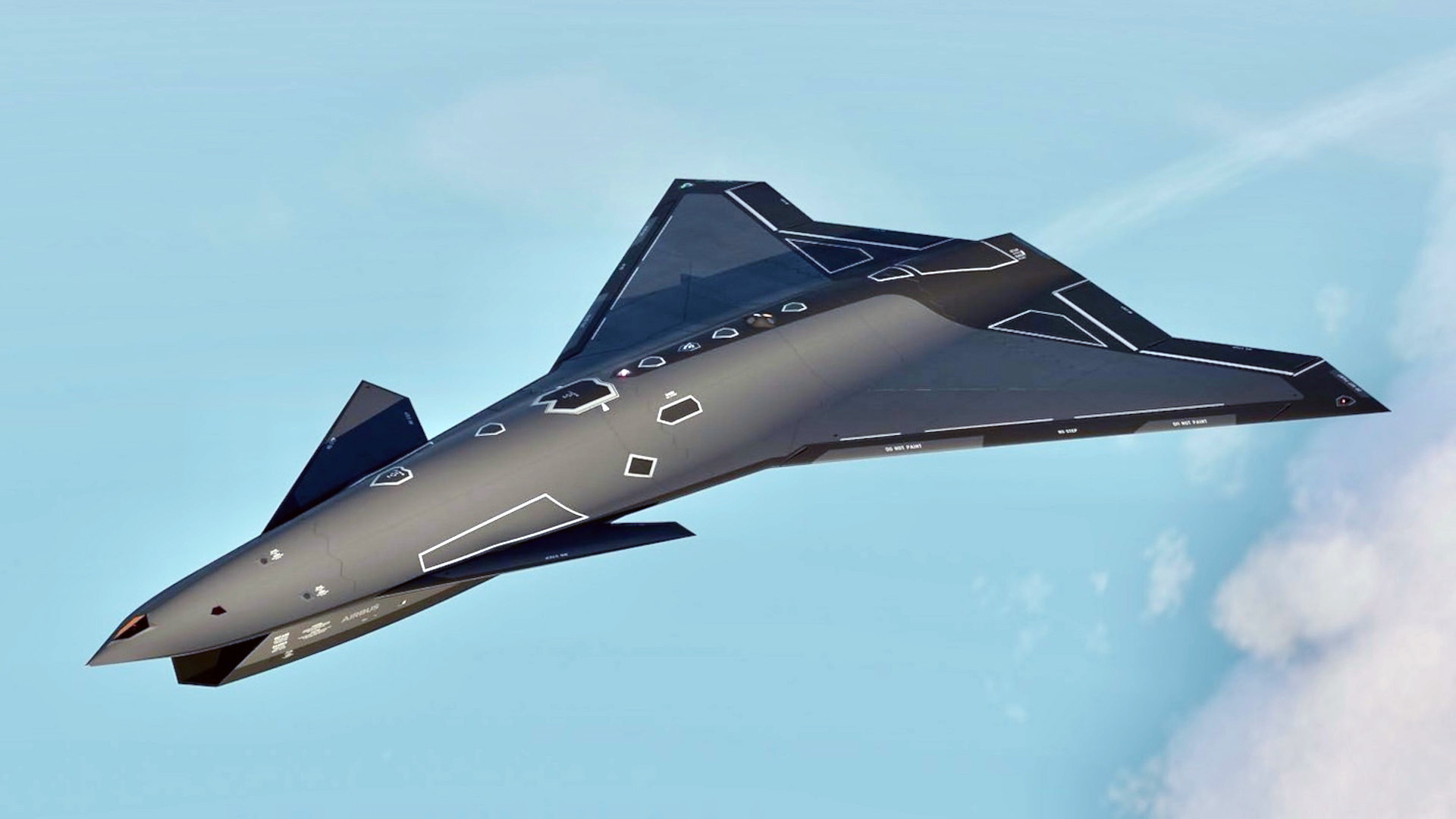Airbus has unveiled a new fighter-like stealthy loyal wingman drone concept. The European aviation consortium is pitching the design heavily to the German Air Force, or Luftwaffe, which has previously expressed interest in an uncrewed companion specifically for its forthcoming Typhoon EK electronic warfare jets. The pilotless wingman is also being presented as a more near-term project that will precede its larger Future Combat Air System (FCAS) plans for the 2040s.
Details about the new drone design, currently simply called “Wingman,” came in a press release from Airbus earlier today. A full-scale “show car”-like model of the uncrewed aircraft will be on display at the ILA International Aerospace Exhibition in Germany’s capital Berlin, which opens on Wednesday.
“In military aviation, a ‘Wingman’ is a pilot in another aircraft that protects and supports the flight lead, delivers more tactical options and thus contributes to mission success. In the Airbus concept, the Wingman is going to operate very much in the same way – only that it is neither a pilot nor a fighter jet flown by one,” according to Airbus’ release. “It is a fighter-type drone that will be commanded by a pilot in a current combat aircraft such as the Eurofighter and can take on high-risk mission tasks that would pose a bigger threat to manned-only aircraft.”
The rendering Airbus has now released shows a stealthy tailless drone design with a modified clipped delta wing with some lambda-wing attributes. Overall, the wings are highly swept with prominent leading-edge root extensions (LERX). There is a chine line that runs around the forward fuselage as well.
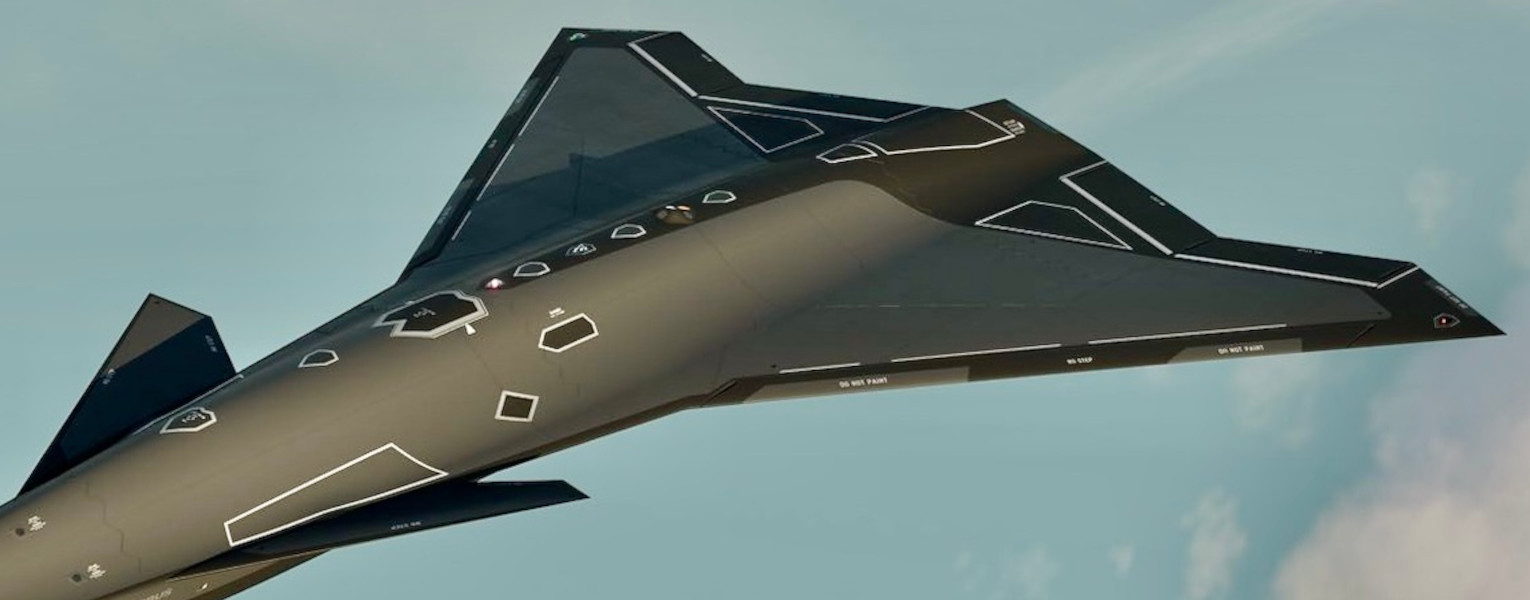
There are also canards on either side of the forward end of the fuselage, which could point to a high degree of maneuverability at the cost of some low observability (stealthiness).
In addition, the drone has a forward-swept angular engine intake under the nose and what looks like an upper-splayed exhaust at the rear. The chin-mounted intake looks to be a Diverterless Supersonic Inlet (DSI) design, as also seen on the F-16 DSI testbed and Russia’s Checkmate light-to-medium-weight fighter concept. This might point to plans for the Wingman drone to be capable of supersonic speed.
The Wingman rendering shows an optical/infrared aperture atop the nose, which might reflect the presence of an infrared search and track (IRST) system. IRST sensors are an increasingly common component of uncrewed aircraft of this general type, as has been seen in testing related to the U.S. Air Force’s Collaborative Combat Aircraft (CCA) and Australian MQ-28 Ghost Bat drone programs.
Along the dorsal spine of Airbus’ new drone concept, there is a row of familiar-looking low observable (LO; stealthy) apertures. There are other outlined sections along the side of the fuselage, some of which could be additional sensor apertures or antennas.

“The Wingman’s tasks can range from reconnaissance to jamming targets and engaging targets on the ground or in the air with precision guided munitions or missiles,” Airbus’ press release says. “Based on the current concept, the Wingman is intended to augment the capabilities of current manned combat aircraft with uncrewed platforms that can carry weapons and other effectors.”
It’s not immediately clear where Airbus’ Wingman drone might carry munitions, but there could be plans for one or more ventral payload bays that are not seen in the rendering available now. The drone could carry stores externally under its wings, but this would negatively impact its stealthy characteristics and performance.
“Pilots in manned aircraft acting as ‘command fighters’ will always have control of the mission. They are always the final decision-making authority, while benefiting from the protection and smaller risk exposure that the delegation of tactical taskings to unmanned systems offers,” Airbus also stresses in its release. “An additional focus is on increasing the overall combat mass in an affordable manner so that air forces can match the number of opposing forces in peers or near-peers in conflicts.”
There are reports that Airbus’ new Wingman concept leverages prior work done under the Low Observable UAV Testbed (LOUT) program. You can read more about what is known about LOUT, which was only publicly disclosed in 2019, here. We have reached out to Airbus for additional details about Wingman and its design.
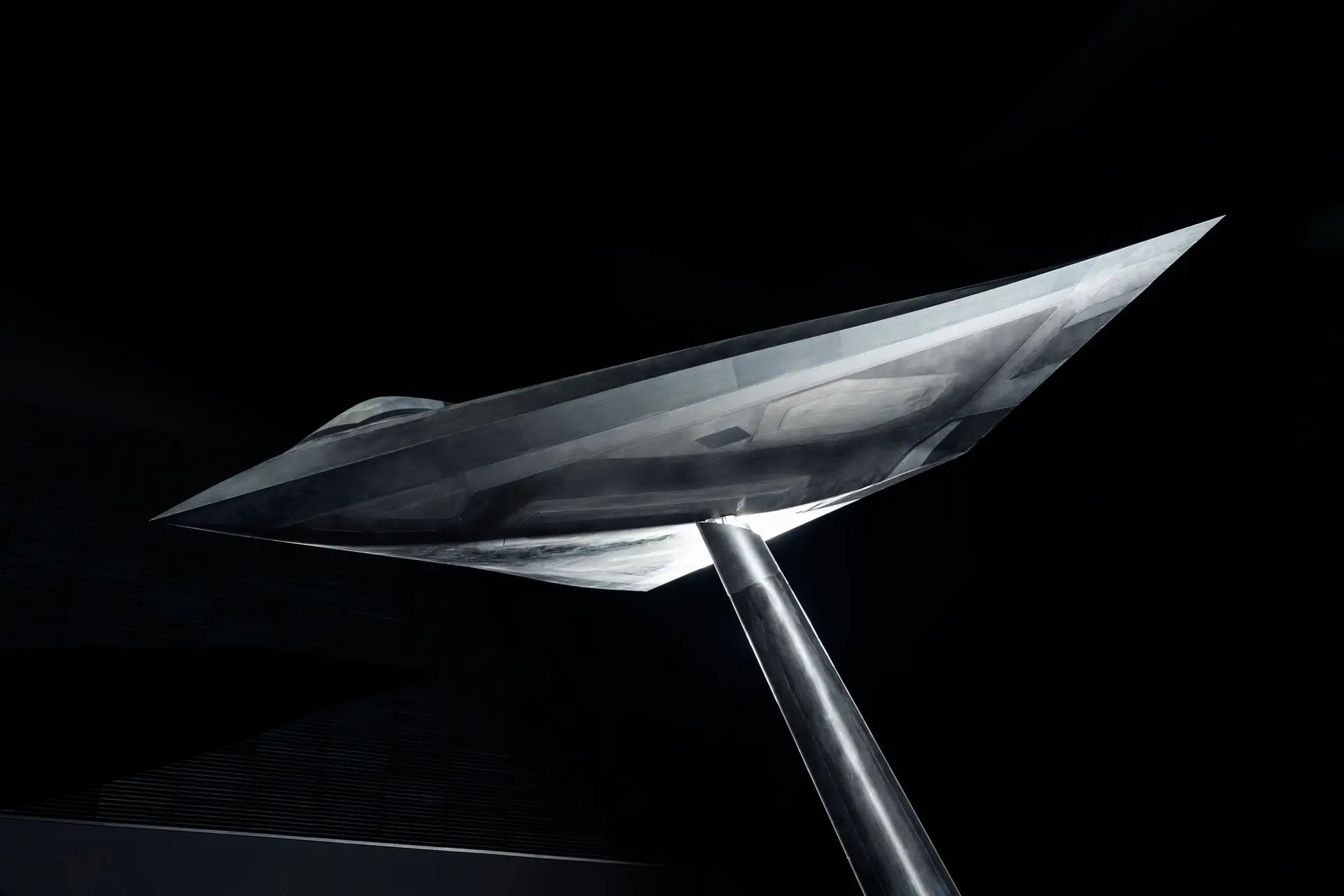
As already noted, Airbus is now actively pitching Wingman to Germany.
“The German Air Force has expressed a clear need for an unmanned aircraft flying with and supporting missions of its manned fighter jets before the Future Combat Air System [FCAS] will be operational in 2040,” Michael Schoellhorn, the CEO of Airbus Defence and Space, said in a statement accompanying the release. “Our Wingman concept is the answer. We will further drive and fine-tune this innovation made in Germany so that ultimately we can offer the German Air Force an affordable solution with the performance it needs to maximize the effects and multiply the power of its fighter fleet for the 2030s.”
Authorities in Germany have previously described plans for a pilotless Electronic Combat Wingman (ECW) to work together with the crewed Typhoon EK. Last year, the German government formally decided to acquire 15 of these electronic warfare jets, which will be converted from existing Typhoon fighters. These aircraft will supplant the country’s aging Tornado ECR (Electronic Combat/Reconnaissance) swing-wing jets, which are currently tasked to perform electronic warfare and suppression and destruction of enemy air defenses (SEAD/DEAD) missions.
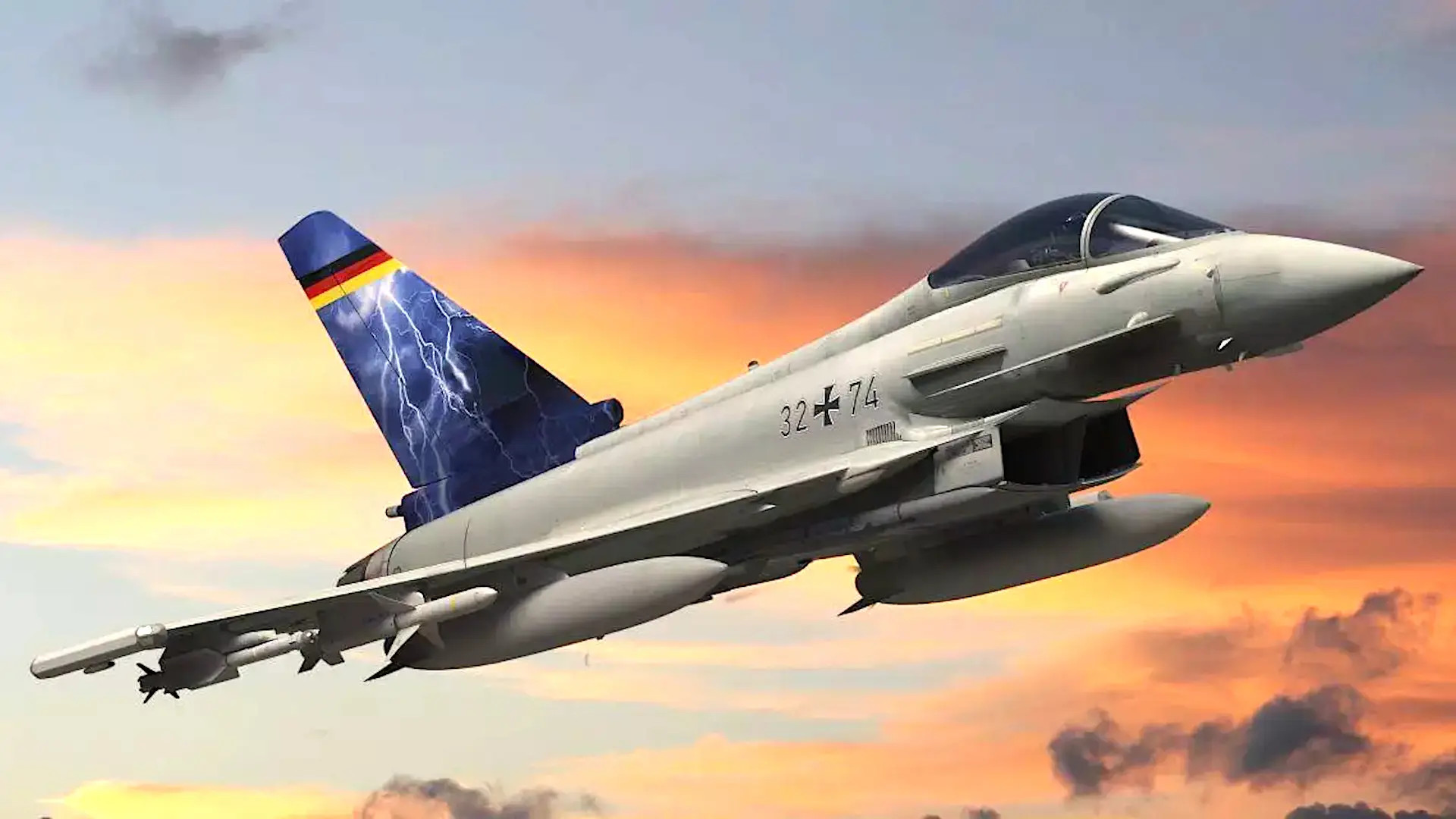
A German Air Force briefing last year included a very basic top-down silhouette, seen below, of the planned ECW showing what looked to be a fighter-sized drone.
Questions have been raised about the practicality of using the single-seat Typhoon EK in the drone controller role on top of its other mission sets. Especially with Airbus’ insistence that a human will always be in the loop when it comes to operating the Wingman drones, this would seem to be an increase in the workload for future EK pilots. A high degree of autonomy for the uncrewed aircraft, as well as limiting the total number of drones a single pilot is expected to oversee, could help mitigate this issue.
A similar debate has already come up regarding the use of a single-seat jet for the electronic warfare role. Airbus originally pitched a two-seat Typhoon version to meet the requirement now set to be filled by the Typhoon EK, and the existing Tornado ECR also has a second crew member in the back to help.
It is also worth noting that Airbus has also pitched its heavy “remote carrier” drone concept, a smaller and less advanced design than the newly unveiled Wingman, as a potential uncrewed wingman for the Typhoon EK and other versions of that jet. Heavy and light remote carriers are being developed as part of the Future Combat Air System (FCAS) program.
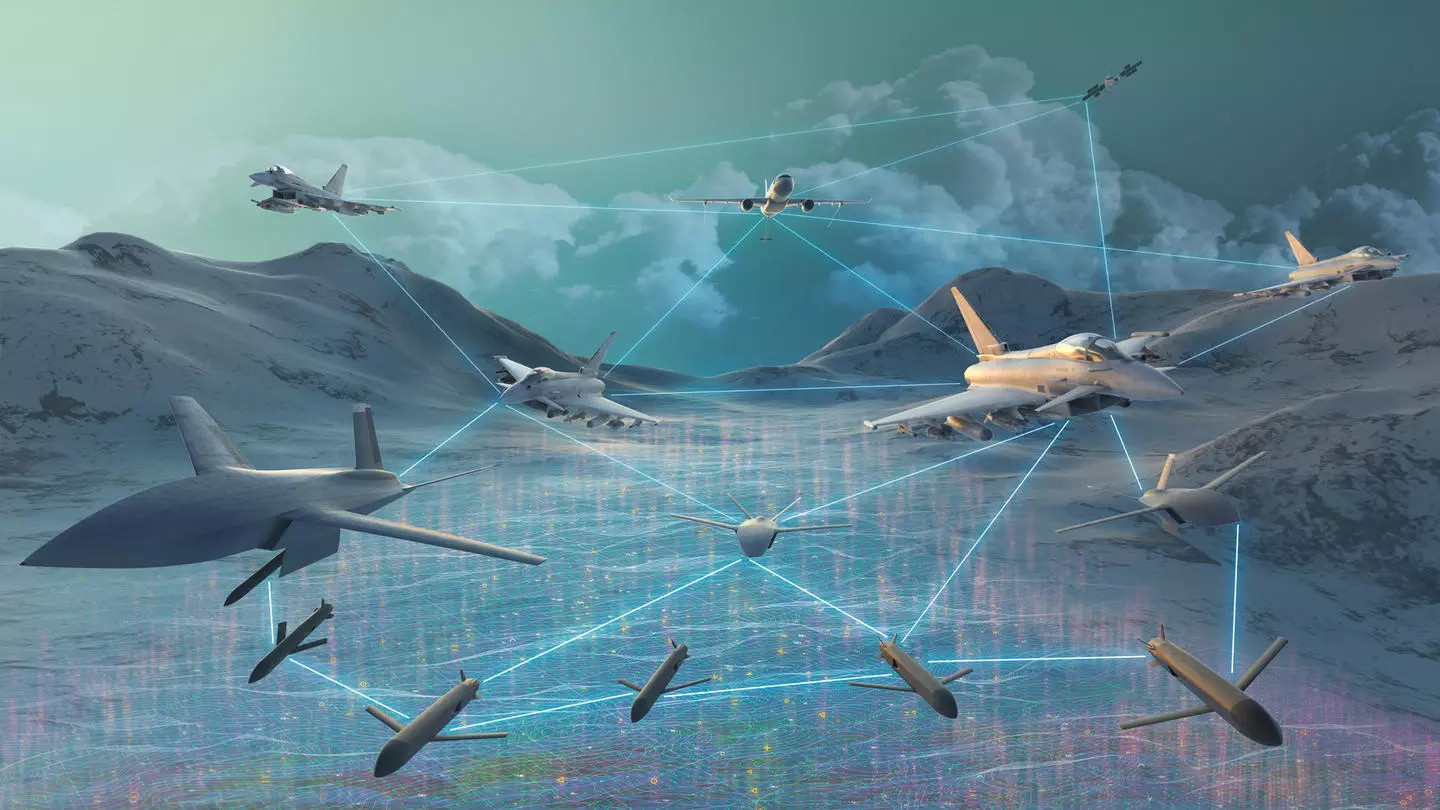
As it exists now, FCAS, also known as Système de Combat Aérien Futur (SCAF) in French, includes plans for heavy and light remote carriers. The Franco-German-Spanish program is a ‘system of systems’ that also includes the development of a stealthy crewed Next Generation Fighter (NGF). FCAS involves the development of various complementary systems, including new weapons, sensors, engines, data-sharing capabilities, communications architectures, and more, as well. This all very much mirrors the U.S. Air Force’s Next Generation Air Dominance (NGAD) initiative and, to a lesser extent, the U.S. Navy’s own separate, but heavily intertwined NGAD effort, as well as the Tempest program that the United Kingdom is leading.

With Wingman, Airbus now looks to be aiming for a higher-performance fighter-like drone capability in the near term that could be among various capabilities that lead into FCAS. The consortium has also alluded to this being just one of several related loyal wingman designs that could be coming in the future, or even be in development now, and that could all have some degree of commonality.
“The model on display at ILA Berlin will serve as a foundation and catalyst to drive the design requirements for each generation of the Wingman,” according to today’s press release.
Despite Airbus’ current focus on Germany with regard to Wingman, there’s no reason why the consortium couldn’t pitch the drone, or related variants or derivatives, to other customers, including the other FCAS partner nations.
With Airbus now set to show off the full-size Wingman model at the ILA show in Berlin later this week, more details about this new drone concept may emerge soon.
UPDATE: 6/4/2024 —
Some additional details about Wingman have now emerged from the setup for the upcoming ILA exhibition in Berlin. A placard accompanying the full-scale model, seen in the social media post below, describes the drone as having a 39.37 foot (12 meter) wingspan, 50.98 foot (15.54 meter) overall length, and a height of 8.3 feet (2.53 meters). The design’s total wing area is also said to be 659 square feet (61.22 square meters).
Airbus has also now shown a rendering of Wingman with twin vertical tails, as well as Paveway-series precision-guided bombs and Brimstone air-to-ground missiles carried externally under its wings. As already noted, this would negatively impact the drone’s stealthy characteristics.
Contact the authors: joe@twz.com, oliver@thewarzone.com
